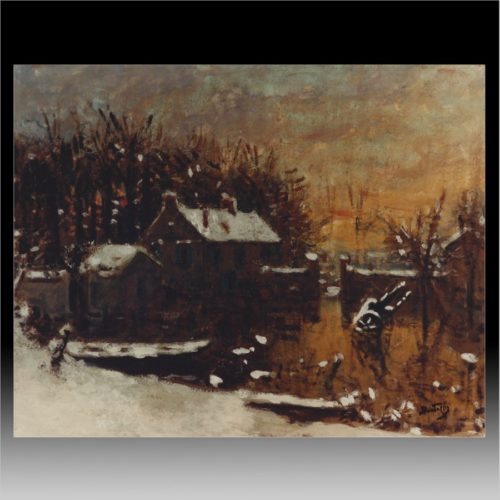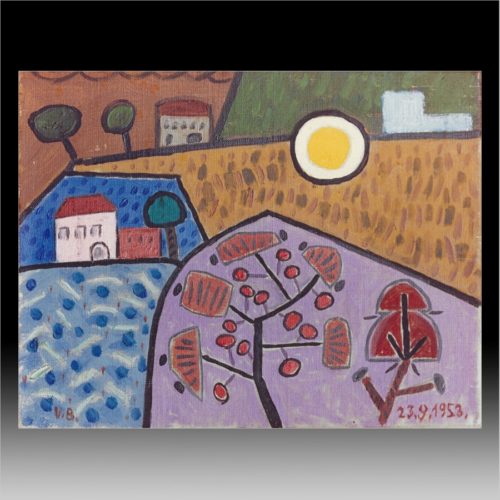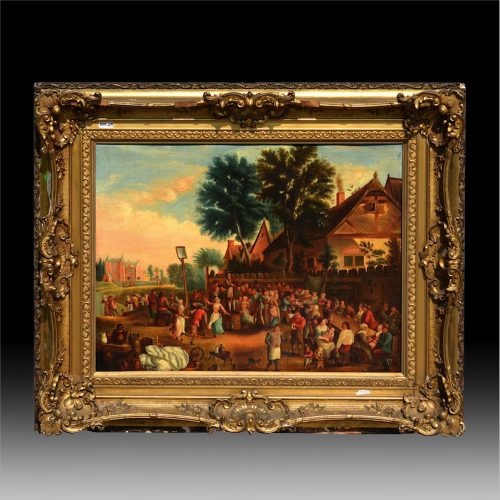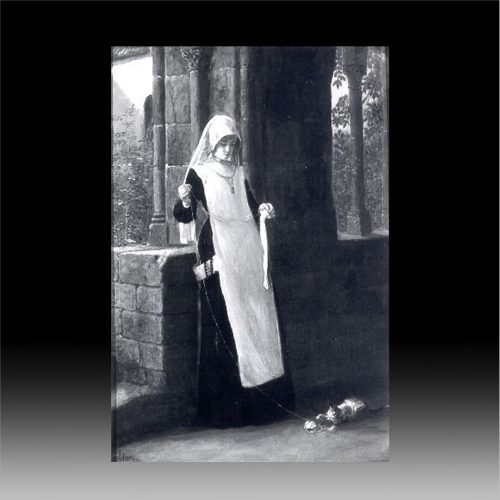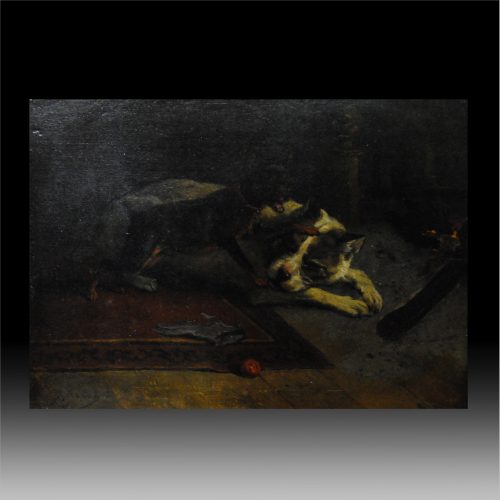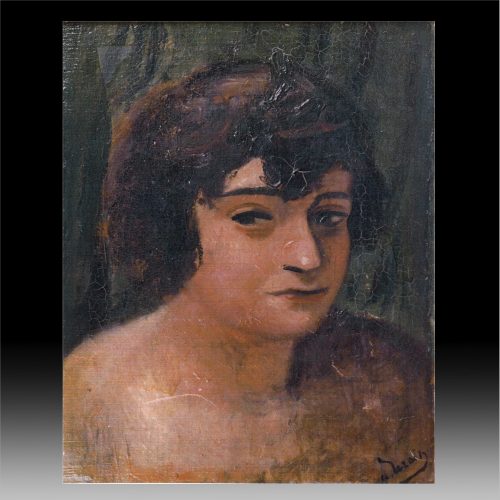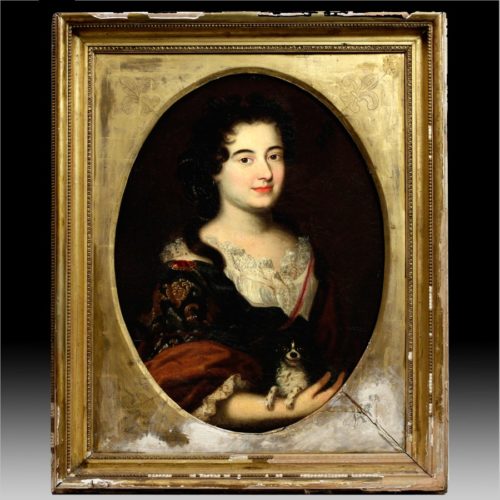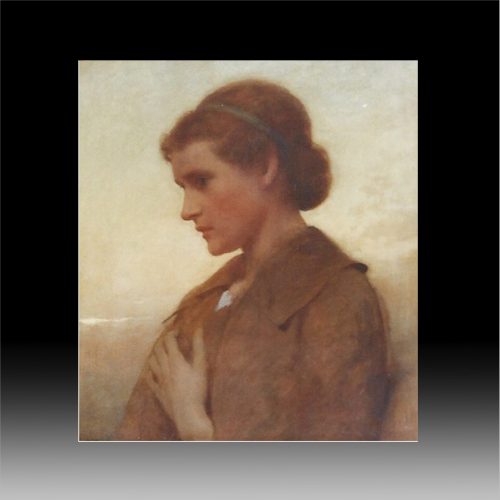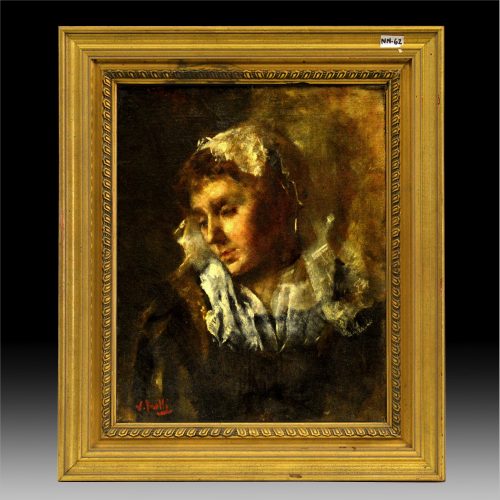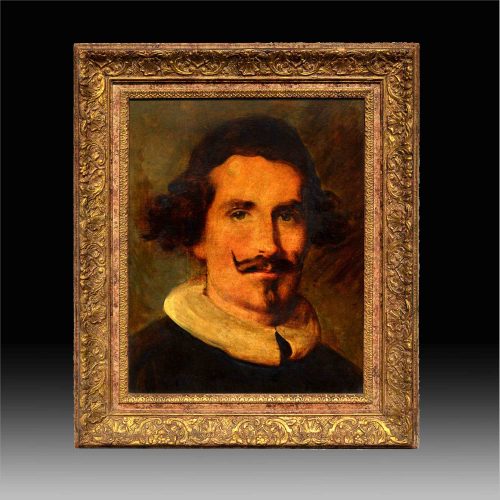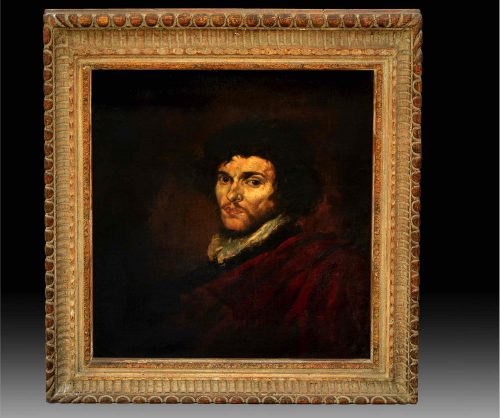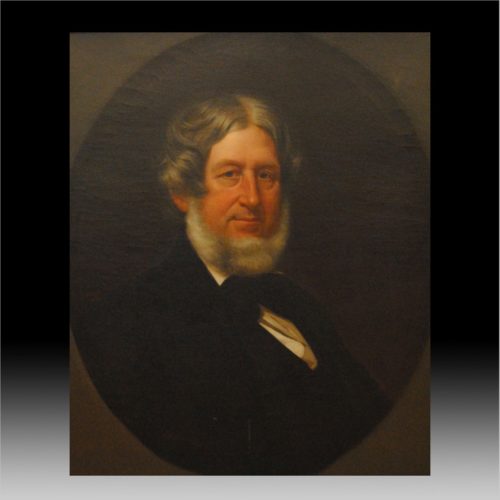-
Pierre Montezin ( French, 1874-1946) “Paysage sous neige” Oil on paper mounted on canvas 29”x 36” Signed lower right PROVENANCE: Wally Findlay Gallery, NY 1961
-
Victor Brauner (Rumanian, 1903-1966) “Paysage” Oil on Canvas 7 ½”x 9” Signed bottom left Dated 1953 COA by S. Kinge PROVENANCE: Alexander Iolas, NY Exhibited: New York, Bodley Gallery, Victor Brauner,1961
-
Dutch/Flemish School, ca. 1800 ‘Peasants Dancing Outside an Inn’ Oil on canvas 26 ½ x 32 ½ in. (67.3 x 82.6 cm)
-
Sale!
L Roekler (German, 19thCent.) 'Playing with the cat’ signed and dated 73, oil on canvas 25 x 18 in. (63.5 x 45.7 cm)
-
Sale!
Charles Michael Verlat (Belgian, 1824-1890) Playmates Oil on panel, signed. 6 ¼ x 8 5/8 inches
-
André Derain (French, 1880-1954) “Portrait de la cortessa di Fraso” Oil on canvas 11” x 9” Signed lower right COA by M. Kellermann PROVENANCE: D. G. Kelekian, Paris Elizabeth Norcott Exhibited: San Francisco, Museum of Art, 1938 (on loan)
-
Henri Gascars ‘Portrait of a Lady, half length in a blue Dress with a white Chemise and a brown Wrap, holding a Spaniel' Bears inscription on a label on the reverse ‘Mrs. Cunliffe' oil on canvas, in a painted oval 27 x 19 ½ in. 68.6 x 49.5 cm. Henri Gascar (1635 – 1 Jan 1701) (also Gascard, Gascars) was a French-born portrait painter who achieved artistic success in England during the reign of Charles II. He painted many leading ladies at court, including several of the King's mistresses, before returning to Paris. He subsequently relocated to Rome, where he died in 1701. Gascar came to England about 1674, probably at the behest of Louise de Keroualle, Duchess of Portsmouth, Charles II's favourite mistress. Gascar (or Gascard, as he seems to have spelt his name at first) was already known as a skillful portrait-painter; among the portraits already painted by him was that of Nicolas de Lafond, author of the "Gazette of Holland", painted in 1667, and engraved by Peter Lombart. The patronage of the Duchess of Portsmouth ensured Gascar a rapid success in England. His flamboyant style, contrasting with the stolid English approach, seemed to suit the frivolity of the time and he painted many of the ladies of Charles II's court. His lack of attention to detail in the likeness he made up for by the sumptuous draperies and tawdry adornments around the subject. For a short time he became fashionable, and is said to have amassed a fortune of over £10,000.
-
Sale!
Seymour Joseph Guy (1824 –1910) Portrait of a Lady Oil on Canvas 18 x 23 in. Seymour Joseph Guy (1824–1910), was an American romance painter. He was born and trained in London but moved to New York City where he is known for genre works. He trained for four years with the portrait painter Ambrosini Jerôme and married the daughter of an engraver, Anna Maria Barber, before his move to New York in 1854. He was a member of the Sketch club and became friends with John George Brown, and they both began to paint genre works of children, probably inspired by their own, as Guy eventually had nine. He died at his home in New York on December 10, 1910.
-
Sale!
Vincenzo Irolli (Italian, 1860-1949) "Portrait of a Lady" Oil on canvas 20 ¼ x 16 ¼ in.
-
Artist Unknown Portrait of a Man 20" x 16" Oil on board
-
Sale!
Portrait of a Man ArtistUnknown 19th Century 37 x 25 in.
-
John George Brown 1831-1913 Portrait of a Man Oil on canvas 25” x 30” John George Brown (November 11, 1831 – February 8, 1913) was a British citizen and an American painter born in Durham, England on November 11, 1831. His parents apprenticed him to the career of glass worker at the age of fourteen in an attempt to dissuade him from pursuing painting. He studied nights at the School of Design in Newcastle-on-Tyne while working as a glass cutter there between 1849 and 1852 and evenings at the Trustees Academy in Edinburgh while working at the Holyrood Glass Works between 1852 and 1853. After moving to New York City in 1853, he studied with Thomas Seir Cummings at the National Academy of Design where he was elected a National Academician in 1861. Brown was the Academy's vice-president from 1899 to 1904. Around 1855, he worked for the owner of the Brooklyn Glass Company, and later he married the daughter of his employer. His father-in-law encouraged his artistic abilities, supporting him financially, letting Brown pursue painting full-time. In 1866, he became one of the charter members of the Water-Color Society, of which he was president from 1887 to 1904. Brown became famous for his depictions of street urchins found on the streets of New York (bootblacks, street musicians, posy sellers, newsboys, etc.). @AC-NB

